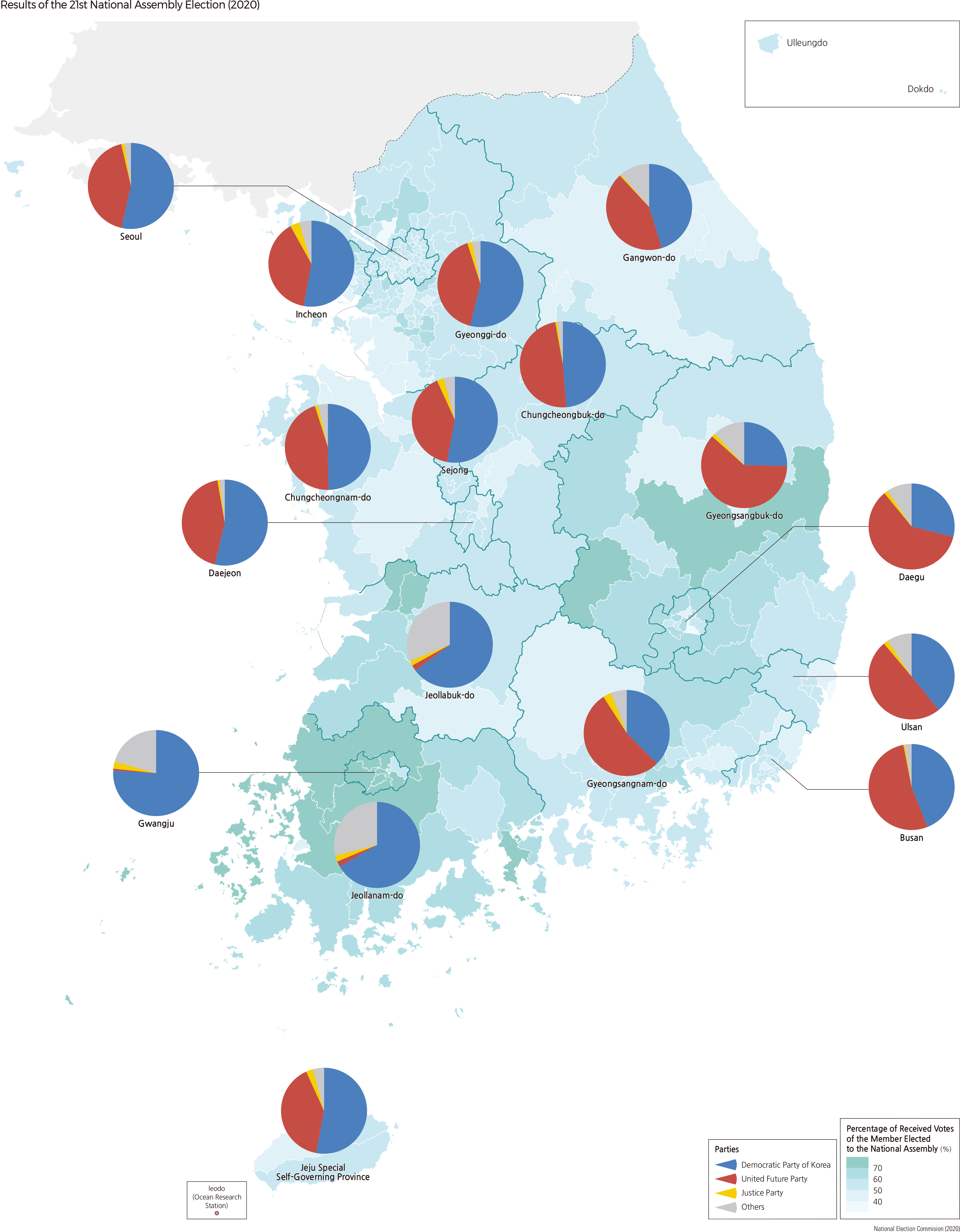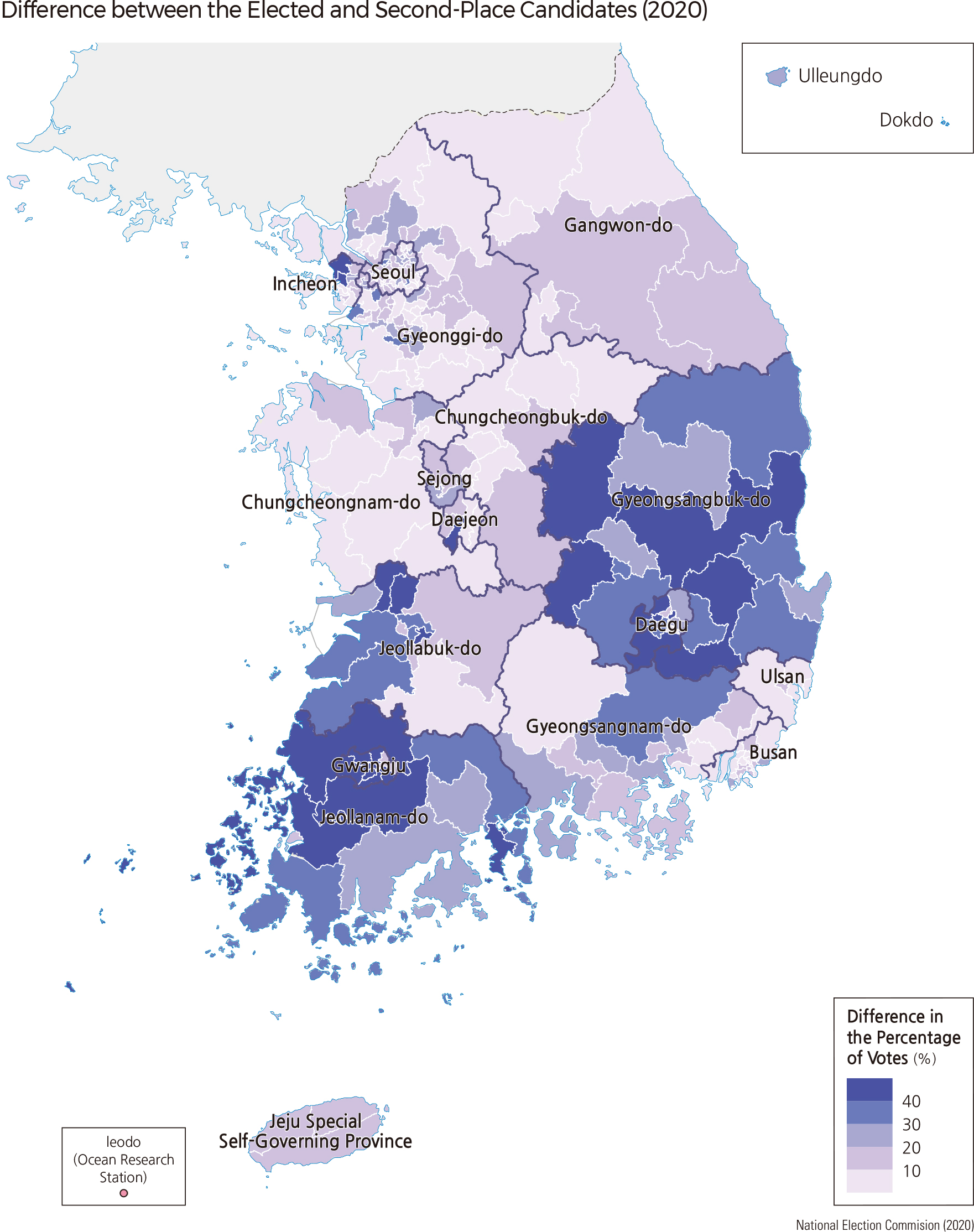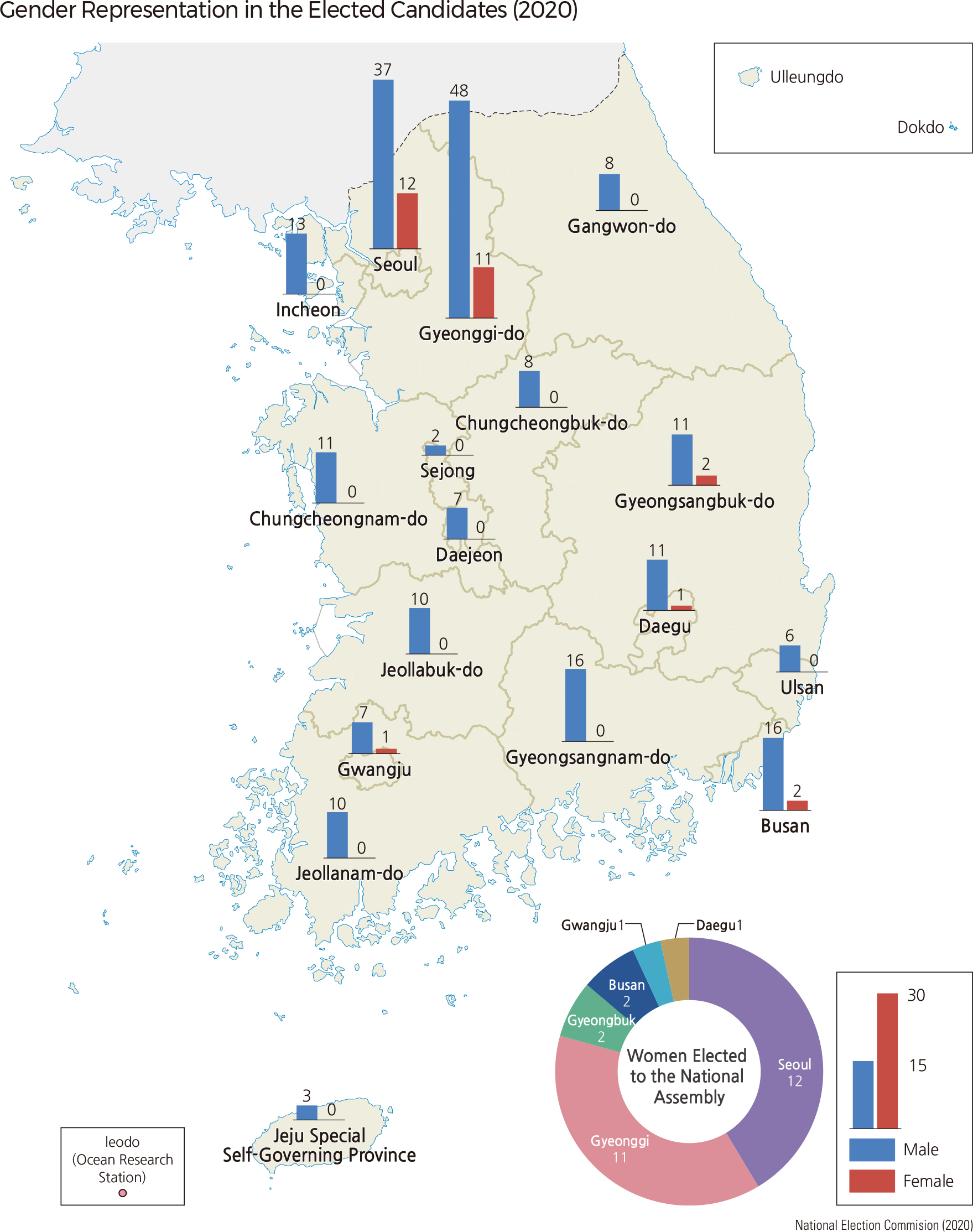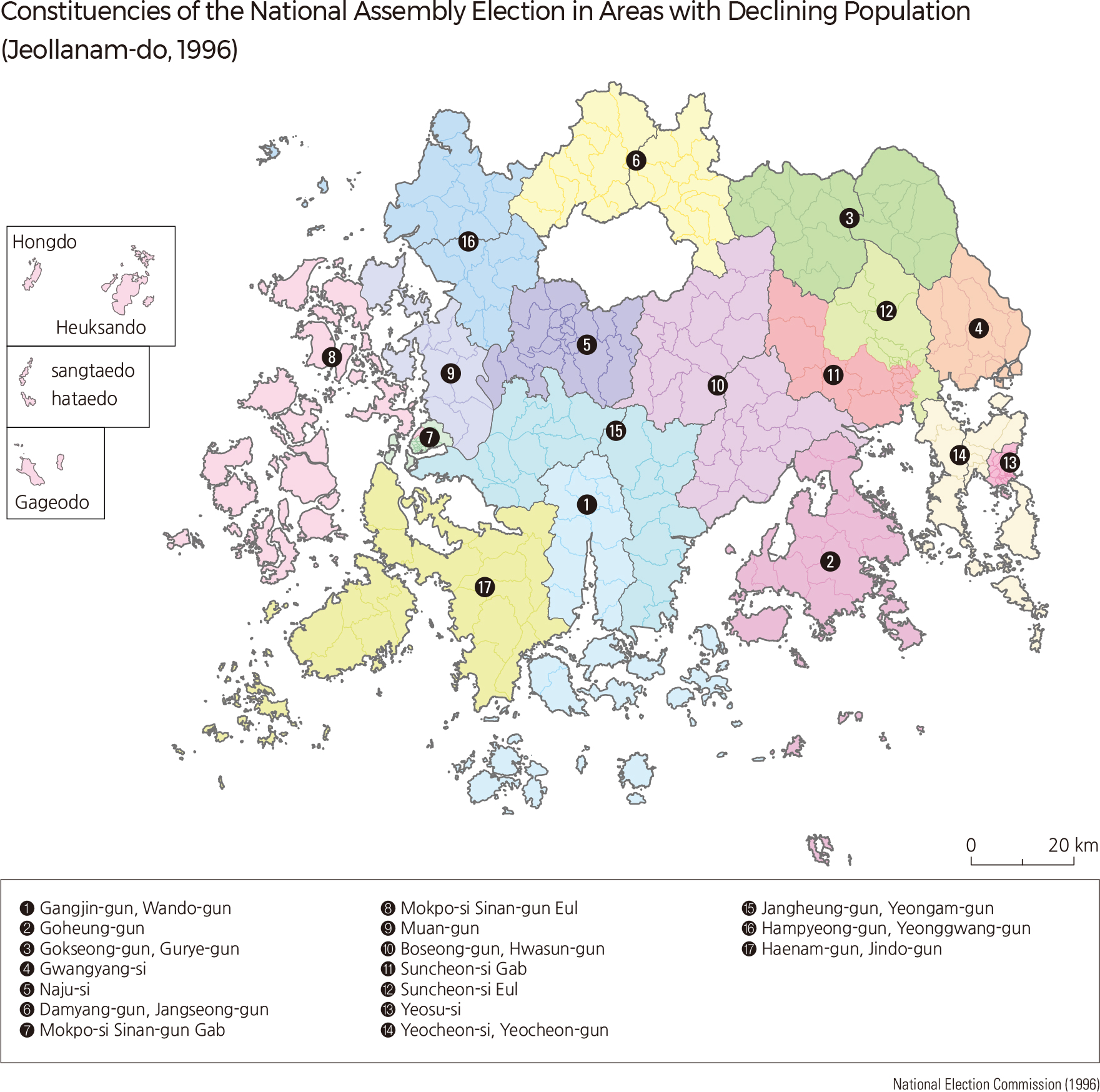English III 2021
The ROK National Assembly is a unicameral legislature in which district representatives are elected every four years, and political parties choose representatives proportionally, by vocation and specialty, based on approval by party members. In the 21st National Assembly Election of April 2020, a total of 253 district representatives and 47 proportional representatives were elected. The 253 district representatives include 163 seats for the Korean Democratic Party, 84 for the United Future Party, 1 for the Justice Party, and 5 independents. Representatives chosen proportionally included 17 seats for the Citizen’s Party of Korea, 19 for the Future Korea Party, 5 for the Justice Party, and 3 for the Open Democratic Party. The National Assembly elections reflected a regional voting pattern similar to that of the presidential election. The Democratic Party of Korea secured many seats in the Seoul Metropolitan Area and the Honam region. On the other hand, the United Future Party won many seats in Gyeongsangbuk-do, Gyeongsangnam-do, and Gwangwon-do. In addition, as the members of the National Assembly have adopted a single-member constituency, by which a candidate who receives a majority of votes is elected, many votes are wasted in areas where the difference in approval ratings for competing political parties is narrow. Particularly, the difference in the number of votes between the elected and second-place candidates is relatively small in the Seoul Metropolitan Area and the central region and is large in the Honam and Yeongnam regions. Therefore, in order to deal with the problem of the election system, the 21st National Assembly election introduced a new system in which some proportional representation seats are allocated to political parties with many wasted votes in the local districts. The number of women elected to the National Assembly has been increasing proportionately. However, the proportion of women elected to local positions is still low. There is also a growing demand to reflect the voices of the younger generation in politics. Recently, more representatives in their 30s and 40s are entering the National Assembly.
The constituency reflects the political system and always changes with demographic change and movement. Recently, the debate about the National Assembly constituency has become an important political issue as the population continues to decline in some constituencies, and the population continues to increase in the Seoul Metropolitan Area. Thus, realignment of the National Assembly constituency has often been carried out just before elections. Followed by the verdict of the Constitutional Court, which sets an upper limit for the proportion of voters between the largest population constituency and the lowest population constituency, the constituencies, particularly in rural areas and old central business districts with small populations, have been realigned and merged. For example, in Jeollanam-do and Gyeongsangbuk-do, where population decline is evident, two to three administrative districts were merged to form a new constituency, and some regions of urban and rural counties were divided and re-aligned to form a new constituency. This realignment led to an inconsistency between administrative districts and constituencies for the National Assembly, undermined regional representation, and excessively expanded the area of the constituency in which administrative districts were merged. |









